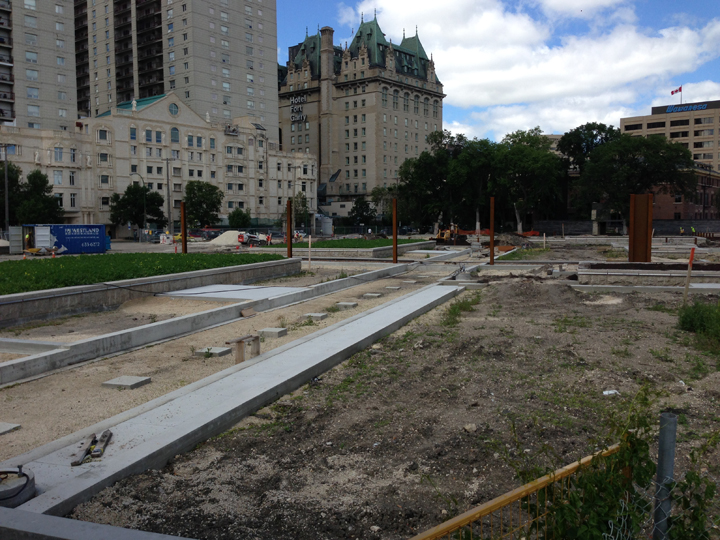WINNIPEG – Manitoba marked the 144th anniversary of its entrance into confederation by proclaiming the site of Upper Fort Garry in downtown Winnipeg a provincial park.

The Upper Fort Garry Heritage Provincial Park Act proclamation, signed Tuesday, officially designates the former Hudson’s Bay Co. trading post a provincial park and establishes an advisory committee on historic resources, development and programming.
Construction of an interpretive centre, a heritage wall and gardens is underway, with a planned opening date of Sept. 27.
A group named the Friends of Upper Fort Garry, which spearheaded a drive to save the site from development, and the Forks Renewal Corp. will manage and maintain the park. Friends of Upper Fort Garry purchased some of the land that is part of the park and gave it to the province.
“This is a historic day as the proclamation ensures this heritage site will be owned by the people of Manitoba and will be a public park forever,” Jerry Gray, the chairman of the Friends of Upper Fort Garry, said in a news release. “Construction is well underway and we invite everyone to attend the opening of Upper Fort Garry Heritage Provincial Park on Sept. 27.”
The fur-trade fort was built at the forks of the Red and Assiniboine rivers by the Hudson’s Bay Co. in 1822. It was one of a series of forts built in the area.
The fort was destroyed in the flood of 1826 but again rebuilt in 1836, this time with stone walls, and extended in 1850, when workers built the gate that is the only part of the fort still standing.
It was seized by Louis Riel during the Red River Rebellion, which later prompted the entry of Manitoba into Confederation.
The fort was sold in 1882 as a booming Winnipeg rapidly expanded around it and its walls, except for one gate, were demolished. The surviving gate and the adjacent park were given to the city by the Hudson’s Bay Co. five years later.
- Trudeau tight-lipped on potential U.S. TikTok ban as key bill passes
- Canadian man dies during Texas Ironman event. His widow wants answers as to why
- Hundreds mourn 16-year-old Halifax homicide victim: ‘The youth are feeling it’
- On the ‘frontline’: Toronto-area residents hiring security firms to fight auto theft














Comments